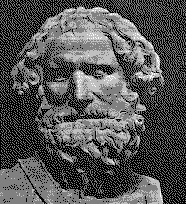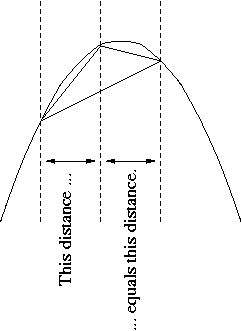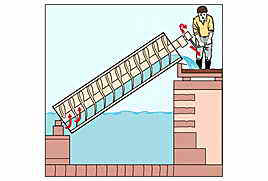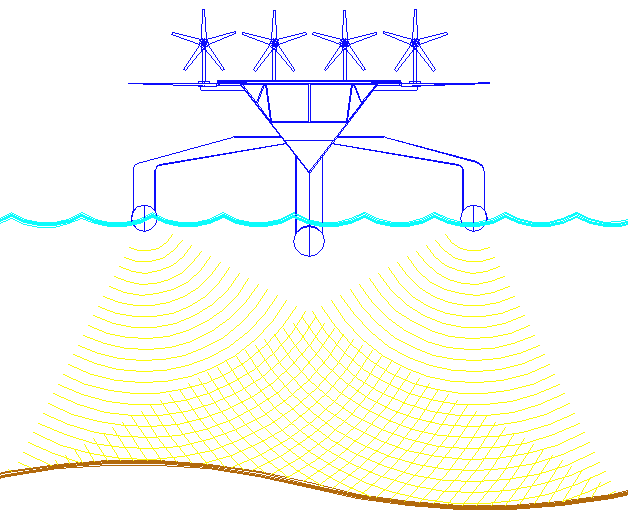|
ARCHIMEDES 287BC - 211BC
|
|||
|
Archimedes was the eminent mathematician and excellent physicist of his time. He was born in Syracuse, on the island of Sicily in 287 B.C. At that time Sicily was a Greek land. Archimedes was the son of an astronomer. He studied at Alexandria in Egypt, and then returned to Syracuse. He early became an astronomer. He constructed a brass planisphere - a projection of the celestial sphere - that showed the revolution of the Sun, the Moon and the five known planets, and showed the nature of eclipses.
Archimedes stone bust
Discoveries and inventions
Archimedes became a popular figure as a result of his involvement in the defense of Syracuse against the Roman siege in the First and Second Punic Wars. He is reputed to have held the Romans at bay with war engines of his design; to have been able to move a full-size ship complete with crew and cargo by pulling a single rope; to have discovered the principles of density and buoyancy, also known as Archimedes' principle, while taking a bath (thereupon taking to the streets naked calling "eureka" - "I have found it!"); and to have invented the irrigation device known as Archimedes' screw. He has also been credited with the possible invention of the odometer during the First Punic War. One of his inventions used for military defense of Syracuse against the invading Romans was the claw of Archimedes.
In creativity and insight, he exceeded any other mathematician prior to the European renaissance. In a civilization with an awkward numeral system and a language in which "a myriad" (literally ten thousand) meant "infinity", he invented a positional numeral system and used it to write numbers up to 1064. He devised a heuristic method based on statistics to do private calculation that we would classify today as integral calculus, but then presented rigorous geometric proofs for his results. To what extent he actually had a correct version of integral calculus is debatable.
He proved that the ratio of a circle's perimeter to its diameter is the same as the ratio of the circle's area to the square of the radius. He did not call this ratio π but he gave a procedure to approximate it to arbitrary accuracy and gave an approximation of it as between 3 + 1/7 and 3 + 10/71. He was the first, and possibly the only, Greek mathematician to introduce mechanical curves (those traced by a moving point) as legitimate objects of study. He proved that the area enclosed by a parabola and a straight line is 4/3 the area of a triangle with equal base and height. (This proposition needs to be understood consistently with the illustration below. The "base" is any secant line, not necessarily orthogonal to the parabola's axis; "the same base" means the same "horizontal" component of the length of the base; "horizontal" means orthogonal to the axis. "Height" means the length of the segment parallel to the axis from the vertex to the base. The vertex must be so placed that the two horizontal distances mentioned in the illustration are equal.)
In the process he calculated the oldest known example of a geometric series with the ratio 1/4:
If the first term in this series is the area of the triangle in the illustration then the second is the sum of the areas of two triangles whose bases are the two smaller secant lines in the illustration. Essentially, this paragraph summarizes the proof. Archimedes also gave a quite different proof of nearly the same proposition by a method using infinitesimals.
He proved that the area and volume of the sphere are in the same ratio to the area and volume of a circumscribed straight cylinder, a result he was so proud of that he made it his epitaph.
Archimedes is probably also the first mathematical physicist on record, and the best before Galileo and Newton. He invented the field of statics, enunciated the law of the lever, the law of equilibrium of fluids and the law of buoyancy. (He famously discovered the latter when he was asked to determine whether a crown had been made of pure gold, or gold adulterated with silver; he realized that the rise in the water level when it was immersed would be equal to the volume of the crown, and the decrease in the weight of the crown would be in proportion; he could then compare those with the values of an equal weight of pure gold.) He was the first to identify the concept of center of gravity, and he found the centers of gravity of various geometric figures, assuming uniform density in their interiors, including triangles, paraboloids, and hemispheres. Using only ancient Greek geometry, he also gave the equilibrium positions of floating sections of paraboloids as a function of their height, a feat that would be taxing to a modern physicist using calculus.
Apart from general physics he was an astronomer, and Cicero writes that in the year 212 BC when Syracuse, Italy was raided by Roman troops, the Roman consul Marcellus brought a device which mapped the sky on a sphere and another device that predicted the motions of the sun and the moon and the planets (i.e. a planetarium) to Rome. He credits Thales and Eudoxus for constructing these devices. For some time this was assumed to be a legend of doubtful nature, but the discovery of the Antikythera mechanism has changed the view of this issue, and it is indeed probable that Archimedes possessed and constructed such devices. Pappus of Alexandria writes that Archimedes had written a practical book on the construction of such spheres entitled On Sphere-Making.
Archimedes' works were not very influential, even in antiquity. He and his contemporaries probably constitute the peak of Greek mathematical rigour. During the Middle Ages the mathematicians who could understand Archimedes' work were few and far between. Many of his works were lost when the library of Alexandria was destroyed and survived only in Latin or Arabic translations. As a result, his mechanical method was lost until around 1900, after the arithmetization of analysis had been carried out successfully. We can only speculate about the effect that the "method" would have had on the development of calculus had it been known in the 16th and 17th centuries.
ARCHIMEDES SCREW
he
Archimedes screw, a spiral screw turned inside a
cylinder, was once commonly used to lift water from
canals. The screw is still used to lift water in the
Nile delta in Egypt, and is often used to shift grain in
mills and powders in factories.
Archimedes Screw
The lowest portion of the screw just dips into the water, and as the cylinder is turned a small quantity of water is scooped up. The inclination of the cylinder is such that at the next revolution the water is raised above the next thread, whilst the lowest thread scoops up another quantity. The successive revolutions, therefore, raise the water thread by thread until it emerges at the top of the cylinder.
The Law of the Lever Before Archimedes
For the fulcrum acts as the attached cord : for both these remain stationary, and act as a centre. For since under the impulse of the same weight the greater radius from the centre moves the more rapidly, and there are three elements in the lever, the fulcrum,that is the cord or centre, and the two weights, the one which causes the movement, and the one that is moved : now the ratio of the weight moved to the weight moving it is the inverse ratio of the distances from the centre.
Now the greater the distance from the fulcrum, the more easily it will move. The reason has been given before that the point further from the centre describes the greater circle, so that by the use of the same force, when the motive force is farther from the lever, it will cause a greater movement. Let AB be the bar, G be the weight, and D the moving force, E the fulcrum ; and let H be the point to which the moving force travels and K the point to which G the weight moved travels.
Writings by Archimedes
Quotes about Archimedes
Named after Archimedes
LINKS :
INVENTORS A - Z
The ultimate Robot Boat. Solarnavigator uses an advanced SWASSH hull as the platform to mount the world's first autonomous circumnavigation. A successful expedition could pave the way for improved safety at sea.
|
|||
|
This website is copyright © 1991- 2013 Electrick Publications. All rights reserved. The bird logo and names Solar Navigator and Blueplanet Ecostar are trademarks ™. The Blueplanet vehicle configuration is registered ®. All other trademarks hereby acknowledged and please note that this project should not be confused with the Australian: 'World Solar Challenge'™which is a superb road vehicle endurance race from Darwin to Adelaide. Max Energy Limited is an educational charity working hard to promote world peace.
|
|||
|
AUTOMOTIVE | BLUEPLANET BE3 | ELECTRIC CARS | ELECTRIC CYCLES | SOLAR CARS | SOLARNAVIGATOR |





